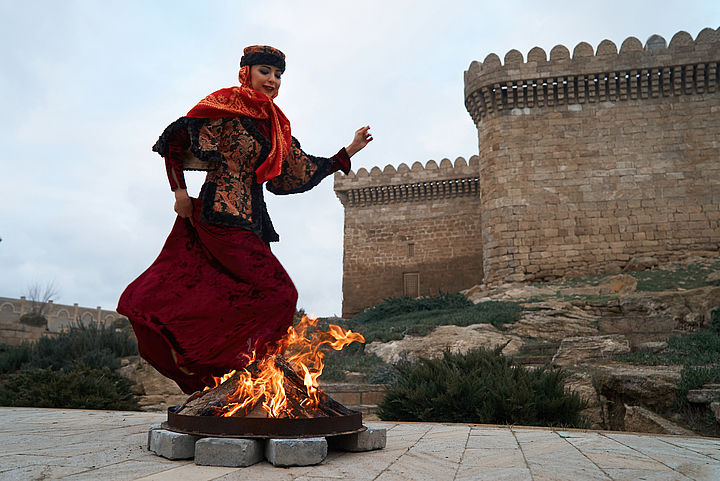Happy Nowruz! Ede Schoma Mobarak!

This is how you wish "Happy New Year" in Persian. However, this wish is not exchanged in January, but in March, because that is when the Persian New Year festival Nowruz takes place. This festival is celebrated by millions of people all over the world, in countries such as Iran, Afghanistan, Tajikistan, Uzbekistan, Kazakhstan, Kyrgyzstan and Azerbaijan, but also in some parts of India, Pakistan, Iraq and Turkey (especially in Kurdish parts). Of course, the names vary a little accordingly, thus Nevruz, Nawruz, Newroz, Nauryz ... The festival is part of the UNESCO list of Intangible Cultural Heritage.
The Nowruz festival is celebrated differently in the various regions. Often times, people will wear new clothes and exchange presents – gifts are especially popular for children. Fire rites are common, and sometimes colorful lights are hung up to welcome the New Year. Many people also attend public celebrations and festivals, where food is offered and dances are presented in traditional costumes. Of course, Nawruz is also a welcome opportunity to meet family and friends and exchange wishes for the New Year or celebrate together.

The main highlight of Nowruz, as it is celebrated in Iran today, is the Haft-Sin table, which is covered with seven elements, all beginning with the letter "S", symbolizing spring and the new year.
The seven elements are:
- Sabzeh (wheat sprouts), representing growth and fertility.
- Samanu (a sweet pudding made from wheat germ), symbolizes prosperity and sweetness in life
- Senjed (dried fruits of the mulberry tree), represent love and tenderness
- Sir (garlic), is said to keep away evil and negativity, as well as to bring health and purity
- Sib (apples), represent beauty and life
- Somagh (sumac), is said to symbolize the sunrise and the beginning of spring
- Serkeh (vinegar), represents patience and strength.
The traditional Nowruz New Year celebration always takes place in mid-March, the exact date is determined by the solar calendar. This year Nowruz will be celebrated on March 21.
Do you already know the Nowruz festival and celebrate it yourself? Come, celebrate with us and tell us more about it. You don't know anything about the Nawruz festival yet? Come, learn more about it and celebrate with us.
Let’s celebrate Nowruz together at TH Wildau: on Tuesday, March 21 at 3 pm at STUK/Hall 19!
Maybe you celebrate different holidays that you would like to present and celebrate on campus with the Campus community? Tell us more about it. Contact us. We may be able to assist you in planning future celebrations together in Wildau! You are welcome to write to us: international(at)th-wildau.de.
